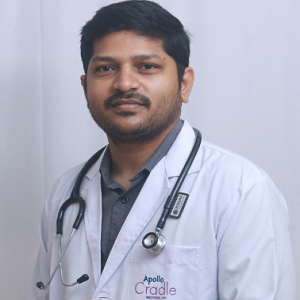Prematurely-born babies can develop a variety of disorders. One of them is retinopathy of prematurity. ROP is an eye disease that occurs in premature babies. Retinopathy of prematurity can be detected through a procedure called ROP screening.
If there is a suspicion of ROP, your doctor or healthcare provider will perform this.
Why is it needed, and who should do it?
An ROP screening is needed to find and treat eye problems in babies who were born early or who are underweight. If your baby falls into one of the following categories, an ophthalmologist will perform the examination:
- Premature babies that weigh 2 kg or less
- Babies born before 34 weeks
- ROP screening is recommended by some studies for infants born before 30 weeks, regardless of birth weight.
Studies also show that around 15–22% of all screened premature newborns are diagnosed with ROP. It has to be noted that infants might not show signs or symptoms of ROP. This can only be diagnosed through screening.
How is ROP screening done?
Your doctor performs an ROP screening after birth. A certified paediatric ophthalmologist or a retina specialist typically performs it. An initial screening is done 4–6 weeks after birth. Some infants might need only one session, while others might need more.
The screening is a non-invasive procedure and is done in the following manner:
- Your infant's pupils will be dilated with eye drops.
- The doctor holds the infant's eye open using an instrument. The pupils are then directed according to the screening. This is a simple procedure and does not cause discomfort or pain.
- A bright light is directed into the infant's eye. This will help the doctor look through a pair of lenses into and through the pupil.
It is important to note that your infant's pupils will be dilated for up to 8 hours after the screening. This will go down on its own. You can contact your doctor if any pain or discomfort is suspected.
When should I see a doctor?
An ROP could result in vision loss in the infant. While mild to moderate ROP will correct itself over time, severe ROP could cause complications. Your doctor will tell you when your baby needs an ROP screening.
Since there are no clear signs or symptoms of ROP, it is suggested that you screen your infant if they are born prematurely and/or are underweight.
What should I do after the screening?
An ROP screening will tell if the ROP is mild, moderate, or severe. There are certain treatments that your infant can undergo to correct severe ROP and prevent vision loss. These include:
- Laser surgery: Laser surgery can be performed to correct severe ROP. This surgery is also non-invasive and takes up to 45 minutes. The surgery stops the growth of abnormal blood vessels in the retina, thereby correcting vision.
- As an alternative way to treat your baby's eye problem, the doctor can inject medicine into the eye. Medicine like Avastin is injected into the eye or around the retina to correct ROP.
It is almost impossible to tell which infants will develop severe ROP and which will not. Hence, it is important to take the right measures as suggested by your doctor. Proper screening should be done from time to time to catch an ROP in its early stages.
You should talk to your doctor if your infant has certain conditions related to respiration, etc. You can consult your paediatrician regarding the procedure.
Request an appointment at Apollo Cradle, Bengaluru - Brookefield. Call 1860-500-4424 to book an appointment.
Untreated ROP has several negative consequences. If not treated promptly, ROP can result in a permanently distorted or detached retina. This might cause eye problems that might not respond to treatments later on.
ROP screenings are simple. Hence, there are no known risk factors attached to them.
The ROP screening is a small procedure and will take up to 45 minutes per eye.
When the retina is pulled away from the wall of the eye in a baby, this is a sign of severe ROP. This can be rectified with further treatment if caught early. It is important to note that ROP comes in stages, and early detection is crucial.
Treatment options are identified based on the stage of the ROP and its severity of it. Other factors might also come into play, based on your infant's medical history and condition.

 92% Patient Satisfaction Score
92% Patient Satisfaction Score






